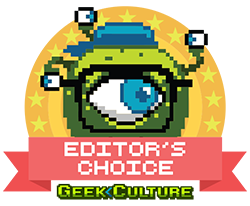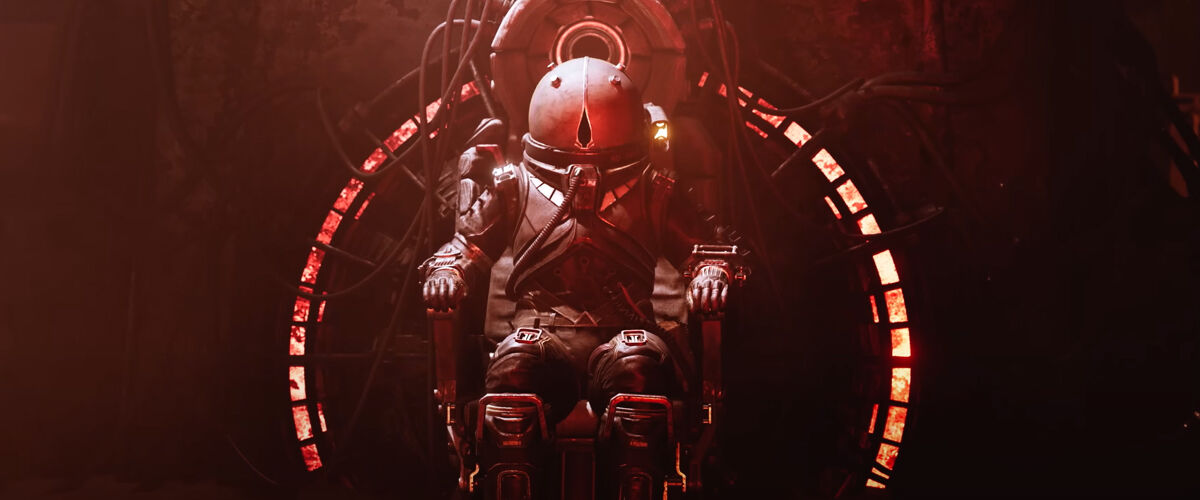Known for the three core pillars of slow, methodical combat, tense atmosphere and an emphasis on resource management under pressure, the survival horror shooter genre is one that has stood the test of time, but one that’s also dominated by big-hitter franchises such as Resident Evil, Silent Hill and Dead Space (may it rest in peace).

When faced against such juggernauts, what can a new IP to the genre do, to truly stand out? For Bloober Team’s sci-fi shooter, Cronos: The New Dawn, the answer lies not in elevating the formula, but taking it back to its roots. This mindset might seem counterintuitive in today’s, “more is better” landscape, but Bloober’s gamble has definitely paid off, as Cronos isn’t just a breath of fresh air; it’s a love letter to the genre, and one of the best survival horror games in recent memory.
It all begins with a single question – What happens when a pandemic spreads out of control? For the game’s fictionalised version of Poland, the answer is complete human annihilation. In 1981, a virus breaks out in the thriving socialist city of New Dawn, with a disease that either kills those infected outright or, worse, mutates them into horrifying monstrosities known as Orphans.

Unable to stop the spread of the virus, humanity is eventually wiped out, and the Earth is reduced to nothing but an Orphan-infested wasteland. To save humanity, an enigmatic organisation known as The Vocation decides that the past is humanity’s only salvation, deploying humanoid beings known as Travelers with the mission to travel back in time and extract the essences of important individuals, with the hopes of using their knowledge to save humanity.
As Traveler ND-3576, players embark on this perilous mission with little to no context of what’s going on, with the game positioned to be intentionally vague and leaving it up to the player to piece together what’s going on on their own. Without venturing into spoiler territory, Cronos: The New Dawn’s slow-burn narrative works in its favour, keeping players invested in the mystery by drip-feeding bits of lore throughout, with major plot reveals only left to its closing hours.

What follows is a roughly 15-hour linear adventure that embodies the very essence of survival horror. Played in the third-person over-the-shoulder perspective, players will venture into the post-apocalyptic wasteland in search of time rifts to travel back to when the outbreak first began, unravelling the mysteries surrounding the virus along the way.
This task is much easier said than done, however, as New Dawn is overrun with Orphans that players must face every step of the way. In true survival horror fashion, resources are extremely scarce, and players will have to diligently scavenge and manage their resources to work around their limited inventory space.

Armed with a ShiftBlade, a weapon which can morph between different gun configurations alongside a brass-knuckle-like melee mode, combat in Cronos: The New Dawn is basic, but true to the spirit of the genre. As someone essentially wearing a bulky metal space suit, the Traveler can’t rely on fancy acrobatics like dodges or rolls, nor can she deflect or block incoming blows à la Leon Kennedy from the Resident Evil 4 remake. Instead, the only way to avoid attacks is to simply run away, and even that’s a tense affair considering how slowly she moves.
Her best bet then is to dispatch foes before they come close. The problem is, the Orphans aren’t your standard shambling zombies, as they not only move at a brisk pace, but also possess elongated tentacle-like limbs that can strike her from quite a distance. As all it takes is a few hits before it’s game over, every combat encounter, even those against one or two foes, becomes a test of tactical re-positioning and quick reaction times.

Further adding to the tension is Cronos: The New Dawn’s weighty gunplay that encourages accuracy and patience over spraying and praying. This is due not only to the aforementioned scarcity of ammunition but also to how weapons work, as each gun configuration often has a charged shot function, which is also the most effective way to take foes out while saving bullets. Initially, shots take quite a while to fully charge up, meaning players will have to tactically kite their enemies to gain enough distance to land a perfect charged headshot.
Fortunately, players will find resources along the way that can be used to upgrade their suit and weapons, evening the odds with increased health, inventory capacity or enhancements to weapons like higher damage or reduced charge times. This makes encounters more manageable as the game progresses, but players still won’t be able to completely breeze through fights in the late game either, as combat scenarios also ramp up in intensity over time by adding not only bigger threats to face, but more of them at any one time, ensuring that combat always remains a thrill.

That’s not even considering the game’s main gimmick either. In the Dead Space franchise, it was “Cut off their limbs”. In 2022’s Callisto Protocol, it was “Shoot the tentacles”. Here, it’s “Don’t let them merge”. In Cronos: The New Dawn, enemies aren’t reduced to mere corpses once they are killed; instead, each body on the ground becomes a potential upgrade source for subsequent foes, with every Orphan possessing the ability to merge with their fallen brethren, boosting their health and damage, or even gaining new abilities in the process.
This system is a literal game-changer, as it forces players to rethink how they approach each group of enemies. As fallen bodies are persistent, the only way to permanently remove them is to burn them with the Traveler’s flamethrower, with each use requiring a gas canister that takes up precious inventory space. As the flames only affects a small area around the player, the best strategy is to burn multiple groups of corpses at once, but trying to dispatch foes within the same spot further increases the risk of them merging, and is overall tricky to pull off during intense encounters, further adding to the chaos of battle as a player struggles to manage foes both alive and dead.

If an Orphan successfully merges, players are in for a much tougher time, as a mutated enemy can seriously throw a spanner in the works with their upgraded abilities. Let the larger, mini-boss-like Orphan merge once, for example, and it gains armour on various parts of its body that completely deflects bullets, forcing players to target specific exposed limbs. Let them merge once more, and they might gain the ability to attack from range, becoming a nearly unstoppable force that takes a lot of effort, and more importantly, precious ammo to put down.
In essence, Cronos: The New Dawn feels like a combination of Resident Evil, Dead Space, and John Carpenter’s The Thing mashed into one glorious chaotic beast, with elements of the Metro franchise thrown in for good measure, owing to its post-apocalyptic European setting.

And it’s this setting that’s truly a sight to behold, and not because of the game’s graphical fidelity – although the Unreal Engine 5 title is quite a looker despite its non-AAA nature – but due to its atmosphere. Much like the Silent Hill franchise, the game relies on what a player can’t see, obscuring the threats around every corner behind thick fog or the shroud of darkness, meaning that exploring its dilapidated city streets or dimly lit corridors is always a creepy and tense affair.
That’s just the sections taking place in the present, too, as once players enter a time rift and travel back to the 1980s, the atmosphere takes a new direction, bringing a new level of creepiness of a world on the brink of collapse, with abandoned streets filled with memories instead of people, offering no shortage of environmental storytelling such as discarded children’s toys, packed suitcases and cars haphazardly piled up on in the middle of the road. It’s a joy to behold, in a dark, twisted manner, and each jump back in time takes players to a different point in society’s collapse, painting a grim yet strangely beautiful picture of humanity’s losing war against an unstoppable pandemic.

It’s clear that Bloober Team has taken some learning lessons from last year’s Silent Hill 2 remake that it worked on, and it has helped elevate Cronos: The New Dawn into an original survival horror IP that not only surpassed expectations but also blew them completely out of the water. Here’s the bottom line – if you’re even remotely a fan of the survival horror franchise, this is one sci-fi time-travelling adventure that’s not to be missed.
GEEK REVIEW SCORE
Summary
For a game with the tagline “Don’t let them merge”, Cronos: The New Dawn is a masterful combination of equal parts Resident Evil, Dead Space, and The Thing, and is well worth the time of any survival horror fan out there.
Overall
9/10
-
Gameplay - 9.5/10
9.5/10
-
Story - 8/10
8/10
-
Presentation - 9/10
9/10
-
Value - 8.5/10
8.5/10
-
Geek Satisfaction - 10/10
10/10















